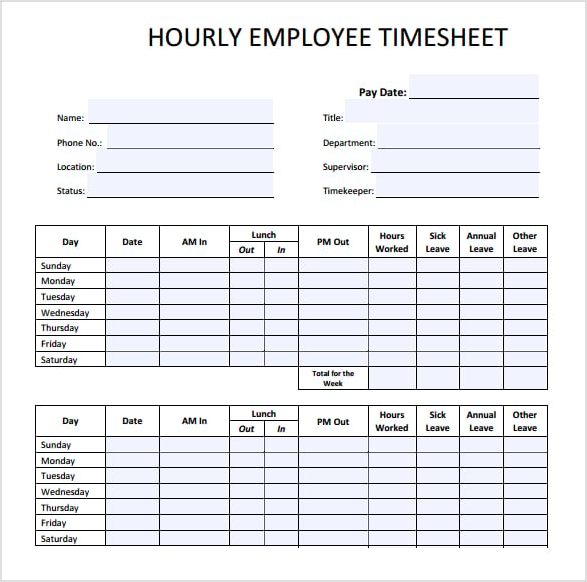Hourly employee timesheets are an essential tool for businesses of all sizes. They provide a record of the hours worked by employees, ensuring accurate payment and compliance with labor laws. In this article, we will explore what hourly employee timesheets are, why they are important, what to include in them, how to write them, and common mistakes to avoid.
What is an Hourly Employee Timesheet?
An hourly employee timesheet is a document used to track the hours worked by employees on an hourly basis. It typically includes information such as the employee’s name, the date, the start and end times of each shift, and any breaks taken. Timesheets can be filled out manually or electronically, depending on the preference of the employer.
Timesheets serve as a record of the hours worked by employees, allowing employers to accurately calculate wages and ensure compliance with labor laws. They also provide a means of tracking employee attendance and productivity.
Why Do You Need an Hourly Employee Timesheet?
Hourly employee timesheets are crucial for several reasons:
- Accurate Payroll: Timesheets ensure that employees are paid accurately for the hours they have worked. By documenting the start and end times of each shift, employers can calculate wages based on the number of hours worked.
- Labor Law Compliance: Timesheets help employers comply with labor laws that regulate working hours and overtime pay. By keeping a record of hours worked, employers can ensure that they are adhering to legal requirements.
- Attendance Tracking: Timesheets provide a means of tracking employee attendance. By recording the start and end times of each shift, employers can identify patterns of lateness or absenteeism.
- Productivity Monitoring: Timesheets can also be used to monitor employee productivity. By tracking the hours worked, employers can assess the efficiency and output of their workforce.
- Dispute Resolution: In the event of a dispute over hours worked or wages owed, timesheets serve as a valuable piece of evidence. They provide a clear record of the hours worked by an employee, helping to resolve any conflicts or discrepancies.
What to Include in an Hourly Employee Timesheet?
A comprehensive hourly employee timesheet should include the following information:
- Employee Information: This includes the employee’s name, employee ID or number, and department.
- Date: The date of the shift should be recorded on the timesheet.
- Start and End Times: The timesheet should have spaces to record the start and end times of each shift.
- Breaks: If the employee takes any breaks during the shift, the timesheet should include spaces to record the duration of each break.
- Total Hours: The timesheet should have a section to calculate the total number of hours worked by the employee for each shift.
- Signatures: Both the employee and employer should sign the timesheet to confirm its accuracy.
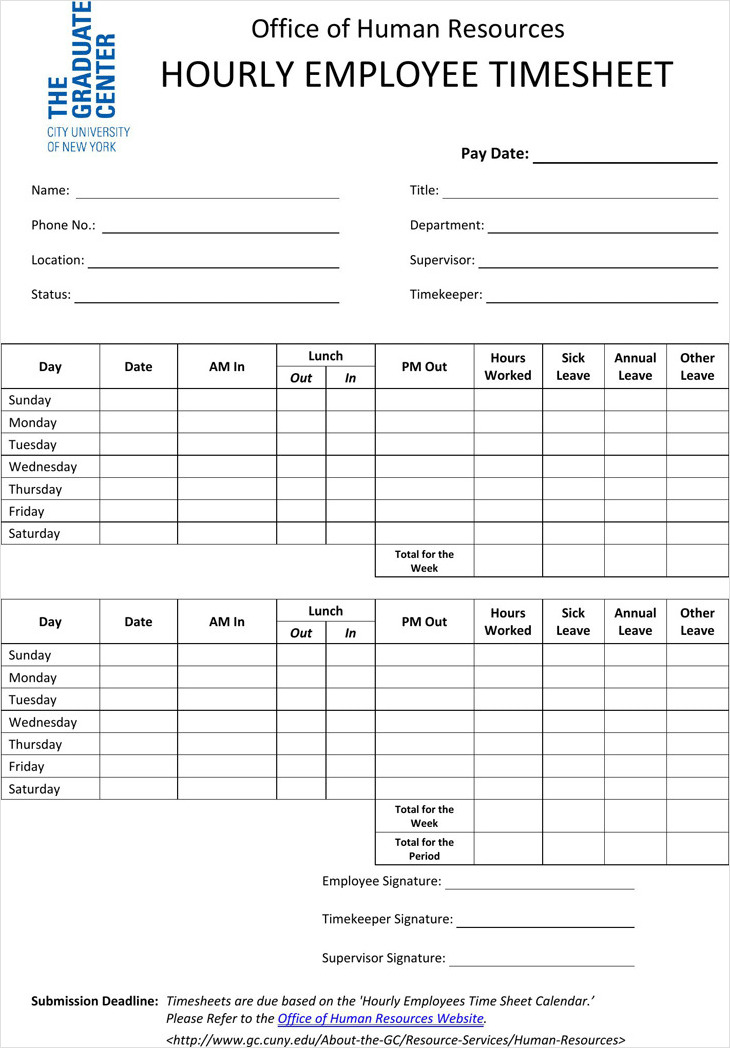
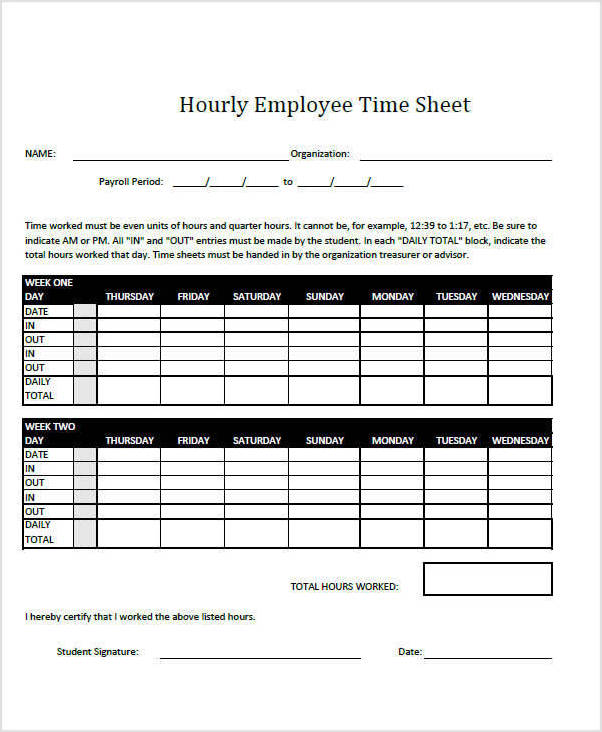
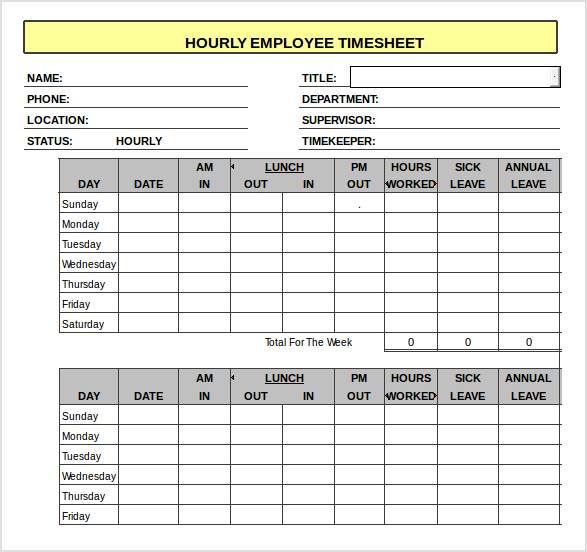
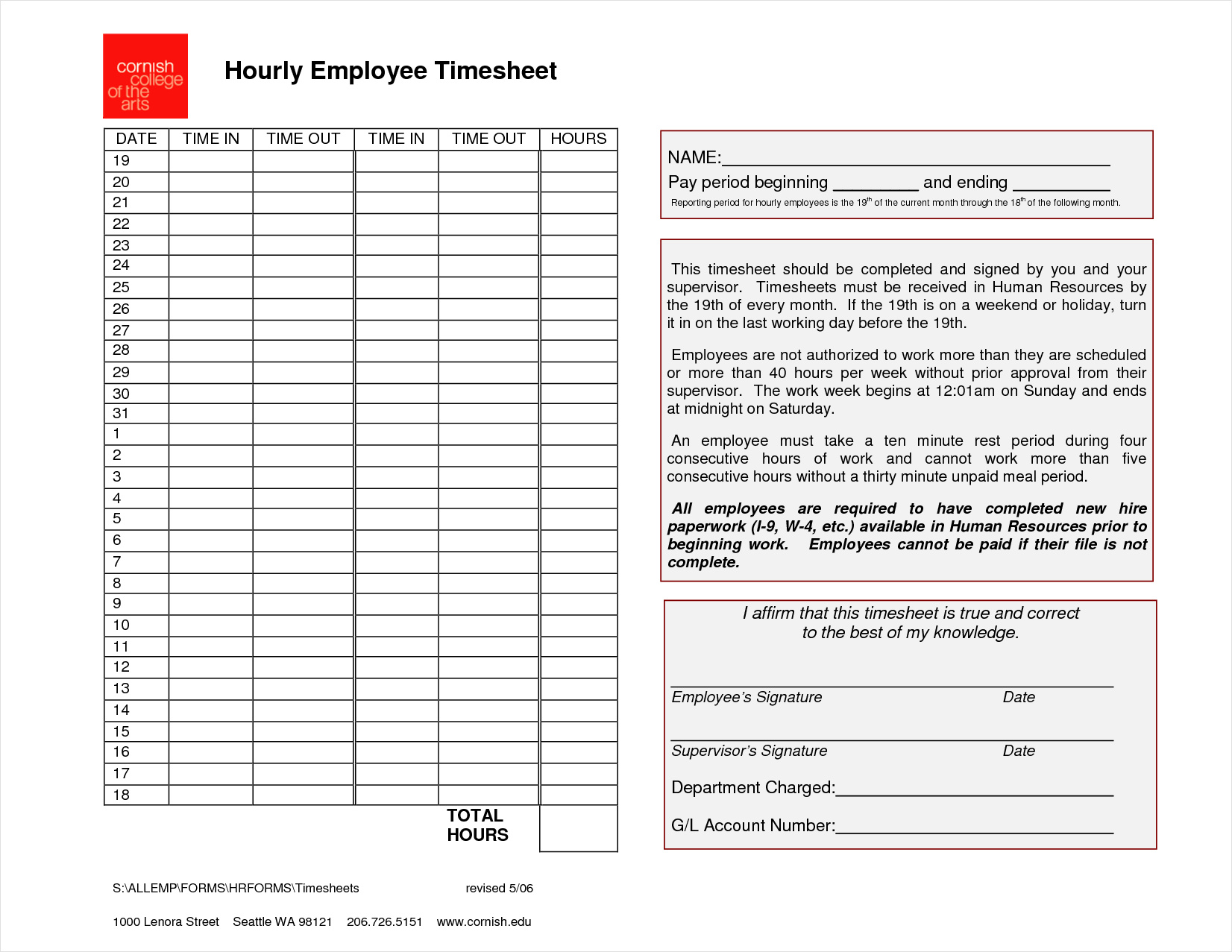
How to Write an Hourly Employee Timesheet?
When writing an hourly employee timesheet, it is important to be clear and organized. Here are some steps to follow:
- Use a Template: Start with a pre-designed timesheet template to ensure consistency and accuracy.
- Include Relevant Information: Fill in the employee’s name, date, start and end times, breaks, and total hours for each shift.
- Be Detailed: Provide enough space for employees to record their hours accurately and include any additional information that may be required by your organization or industry.
- Use Clear Instructions: Include clear instructions on how to fill out the timesheet to avoid confusion or errors.
- Ensure Accessibility: Make sure the timesheet is easily accessible to employees, whether it is in a physical format or available electronically.
- Implement a Review Process: Establish a process for reviewing and approving timesheets to ensure accuracy and compliance.
Mistakes to Avoid
While creating and maintaining hourly employee timesheets, it is important to avoid the following common mistakes:
- Inaccurate Time Recording: Ensure that employees record their start and end times accurately to avoid discrepancies in wages.
- Missing Breaks: Employees should be reminded to record any breaks taken during their shifts to ensure compliance with labor laws.
- Failure to Include Employee Information: Make sure to include the employee’s name and other relevant information on the timesheet to avoid confusion or misplacement.
- Missing Signatures: Both the employee and employer should sign the timesheet to confirm its accuracy. Missing signatures can lead to disputes or challenges in the future.
- Lack of Review: Timesheets should be reviewed and approved by the appropriate personnel to ensure accuracy and compliance with labor laws and company policies.
In conclusion, hourly employee timesheets are a vital tool for businesses to track and manage employee hours, ensure accurate payroll, and comply with labor laws. By following the steps outlined in this article and avoiding common mistakes, employers can create effective timesheets that promote transparency and efficiency in the workplace.
Hourly Employee Timesheet Template – Download
